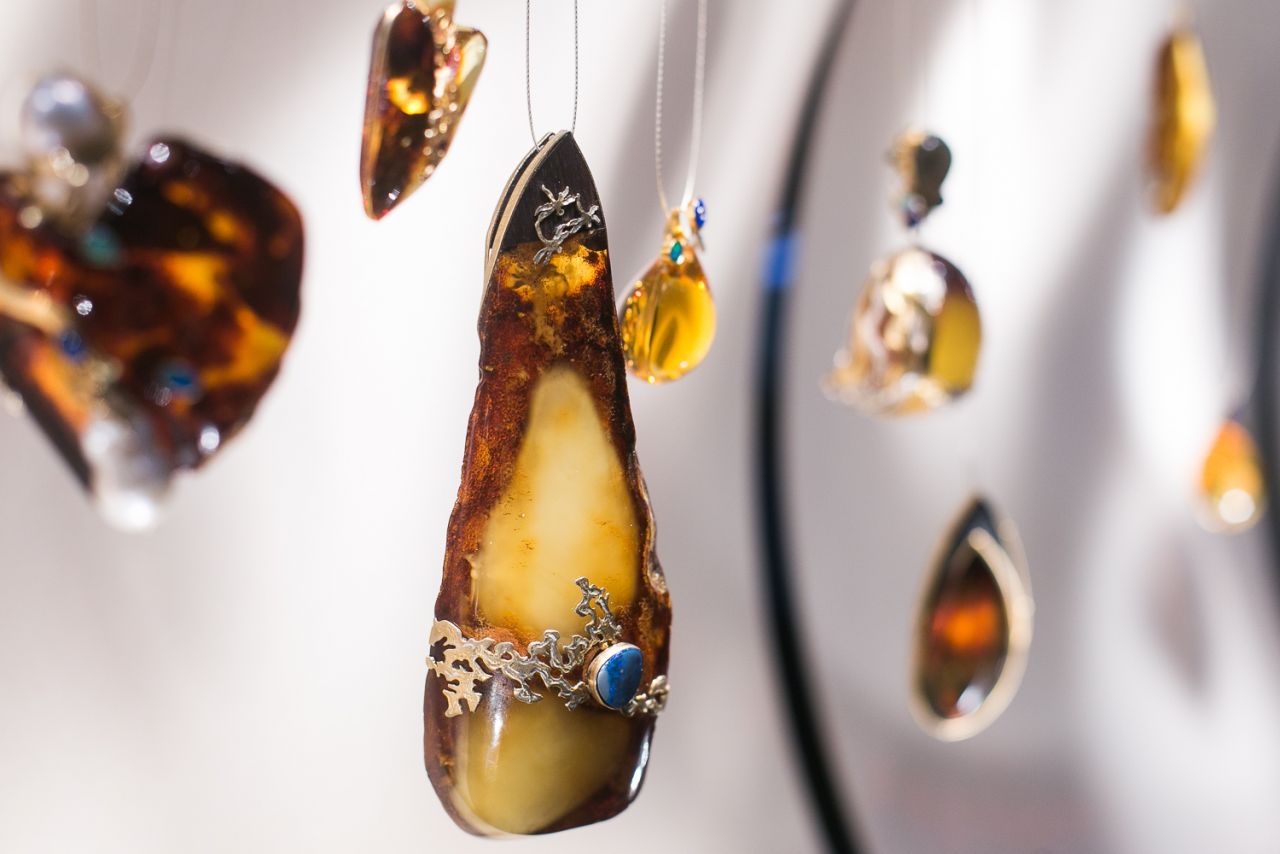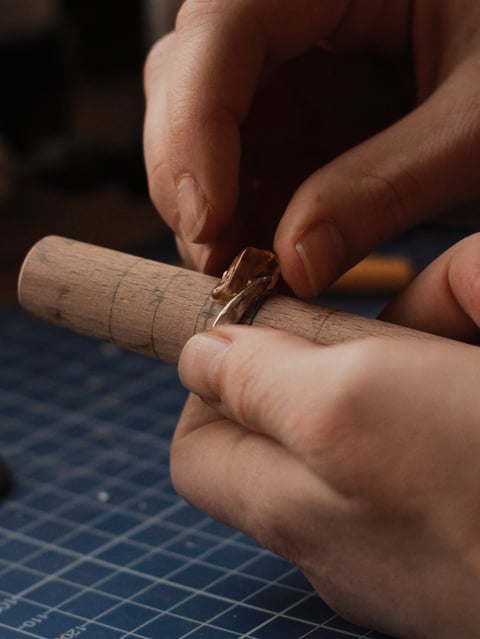
Amber is probably best known for the artifacts that can be found preserved within it. Millions of years ago, when amber oozed from plants, the substance acted as a sticky trap for ants, bees, termites and other insects. Flower parts, leaves and pine needles are also typical amber inclusions, along with gas bubbles. For thousands of years, this has captivated humans and led to them using amber in jewelry.
A quick guide to amber
| Specification | Details |
| Most Valuable Color | Milky white to creamy yellow, red, blue / blue-green |
| Most Popular Cut | Free-form |
| Hardness | 2 - 2.5 on Mohs Hardness |
Which countries produce amber?
Amber is found in many places around the world, from Alaska to Madagascar, but the largest deposits used for jewelry are in the Dominican Republic, the Baltic region of Europe, and Myanmar.
Top exporters of Amber include:
- Baltic region (Europe)
- Myanmar
- Dominican Republic
Common colors of amber
Yellow and brown-tinted amber are the most common colors of amber, making up more than two-thirds of the amber found in the world. Black amber accounts for around 15% of amber pieces, and is made from amber (originating as tree resin) mixing with tree remains or other plant matter.
The most valued colors of amber are:
- Milky white to a creamy yellow shade, known as Butterscotch. These are typically found in Baltic amber
- Red amber, found in Myanmar
- Blue, found in the Dominican Republic
- Blue-green, unique to tropical amber and often found in Mexico; these colors are caused by fluorescence
Cuts and durability
Amber is commonly polished into a free-form shape that follows the original shape of the rough, but cuts for amber include beads and cabochons. Amber might be faceted, but this is rare. As amber has a lower relative density it can feel very light, even in large sizes; this makes it possible to use fairly large sizes in jewelry.
Amber's hardness can vary from 2 to 3 on the Mohs scale, but is more commonly in the 2 to 2.5 range. This relative softness means that amber is easily worked, and easily damaged if worn in jewelry that is exposed to rough daily wear.

History of and within amber
Amber is one of the first organic gem materials to be used by man; relatively soft, it has been carved into beads and jewelry since the Bronze Age, and can be polished to a gleaming finish.
Amber is formed from resin exuded from tree bark when a tree is stressed by damage, insects, fires, or disease. Formed many thousands of years ago, amber can serve as a window into creatures that existed at those times. As it is a resin, amber is considered a gem material rather than a gemstone.

Legend
People have attributed mystical and healing properties to amber since Neolithic times. The Greeks knew that when amber is rubbed with wool, it creates sparks, so they dubbed the substance “electrum” - this led to the creation of the word electricity that is used today.
The Ancient Greek historian Nicias believed amber to be congealed droplets of sweat formed on the Earth as The Sun set beneath the waves. Other ancient writers depicted these "droplets" of fossilized sap as the tears of gods or heroes on various quests.
The Vikings carved amber pieces into animal shapes believed to contain the strengths of the animals. In Ancient Greek and Roman times, women wore amber fish, frog, and rabbit figurines to ensure fertility. The early Chinese believed the souls of tigers became amber upon their release from this plane.
Trends in jewelry
Amber has been a popular material in jewelry-making for centuries, and its popularity has continued into the late 20th and 21st centuries. In recent years, there has been a trend towards natural and raw amber in jewelry. This type of amber is minimally processed, preserving its natural shape and texture. This trend has been influenced by the growing interest in organic and sustainable materials.
Amber has also been used in combination with other materials, such as silver, gold, and other gemstones. This trend allows for a unique and personalized look and adds a contemporary twist to traditional amber jewelry.
Additionally, on one hand the minimalist trend has also incorporated amber in jewelry, with simple and sleek designs often featuring a single amber stone as the centerpiece. On the other hand, some amber jewelry designers have embraced the opposite approach, creating bold and eye-catching statement pieces. These designs often feature large pieces of amber or multiple stones, and they make a statement with their size and color.




